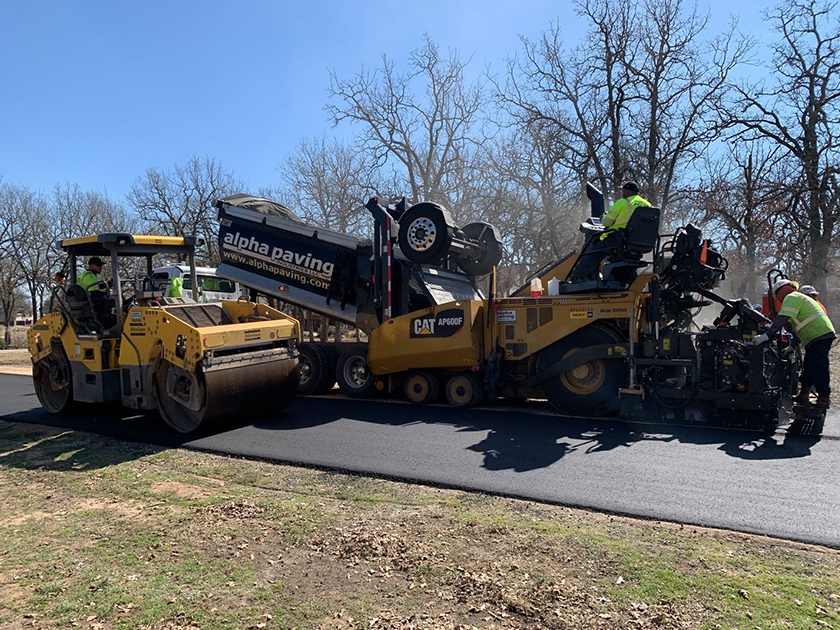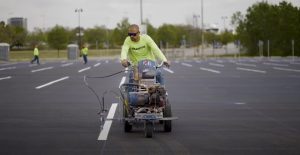 If the surface of your pavement is showing signs of wear or distress, you may think that you should start planning its reconstruction. However, an overlay might be a practical solution that can allow you to obtain many additional years of service from your existing pavement. Essentially, overlays are new layers of asphalt that a paving company installs over the top of an existing pavement. Because the overlay gives the surface the appearance of a new pavement, some contractors refer to the procedure as asphalt resurfacing. Despite their widespread use, many people are not familiar with pavement overlays. Here are the answers to five questions about asphalt overlays that customers frequently ask their contractors.
If the surface of your pavement is showing signs of wear or distress, you may think that you should start planning its reconstruction. However, an overlay might be a practical solution that can allow you to obtain many additional years of service from your existing pavement. Essentially, overlays are new layers of asphalt that a paving company installs over the top of an existing pavement. Because the overlay gives the surface the appearance of a new pavement, some contractors refer to the procedure as asphalt resurfacing. Despite their widespread use, many people are not familiar with pavement overlays. Here are the answers to five questions about asphalt overlays that customers frequently ask their contractors.
Five Things to Know About Asphalt Overlays
How Much Do Asphalt Overlays Cost?
Without knowing the specifics about the job, no asphalt paving company can provide an accurate answer to this question. The size of the pavement, the location of the job, and the work that the contractor must perform before installing the overlay can all impact the total cost of the overlay. However, if you choose reconstruction, you can expect to pay at least 33% more than a paving overlay would cost, and it is not uncommon for reconstruction to cost twice as much as an overlay.
Are Asphalt Overlays Always the Most Cost-Effective Option?
In most cases, a street or parking lot overlay is extremely cost-effective. However, there are exceptions. If your pavement is more than 18 or 20 years old, it will likely be more cost-effective to have an asphalt company tear it out and rebuild it. Since an overlay will have a very short life if the contractor does not repair cracks and other breaks before overlaying the pavement, if there is severe damage that extends deep into the structure of the pavement over more than about a third of its total area, an overlay may not be the most cost-effective option.
Will a Paving Overlay Strengthen a Damaged Foundation?
No, the only way to help a damaged or weakened foundation is to repair it, which involves removing the existing pavement. If the damage to the foundation exists in only a few small areas, an overlay may still be an excellent option. However, a loss of structural integrity affecting more than approximately 25% of the foundation may make a reconstruction a better choice.
Will the Extra Layers of Asphalt Be Obvious to Everyone?
Many people worry about the impact of an overlay on the pavement’s appearance and drivability. They envision sunken manhole covers, jarring transitions between pavements, and truncated curb reveals. Before asphalt paving contractors install an overlay, they grind away the existing asphalt to a depth equal to the amount of new asphalt they will install. The depth could be as little as an inch, or it could be as much as three inches, but it is usually around two inches or slightly more. By milling the pavement first, curb reveals, drains, transitions, and other features can remain unaffected.
Can You Install an Asphalt Paving Overlay on a Concrete Pavement?
Many concrete pavements are suitable for an asphalt overlay. This is a common and popular combination that you can find on numerous state and federal highways. However, an asphalt company needs to take certain steps when placing an overlay on concrete pavement, so you want to make sure that the paving contractor you hire understands everything that will be involved.
If You Need Answers to Your Paving Questions, Contact Alpha
Alpha Paving is a full-service, well-respected paving company based in Round Rock, Texas. In addition to installing overlays, we offer street maintenance and parking lot repair, asphalt paving and concrete installation, asphalt sealcoating, parking lot striping, speed bump installation, thermoplastic pavement markings, concrete repair, road construction, and parking lot signs. We have an exemplary reputation for quality, customer service, and integrity. For a free quote, call our office at 512-677-9001, submit our online request form, or email Info@AlphaPaving.com.







